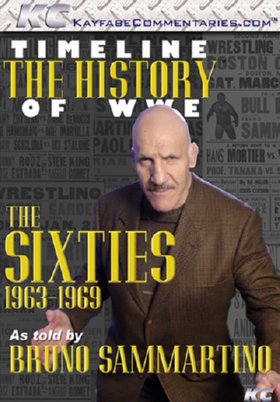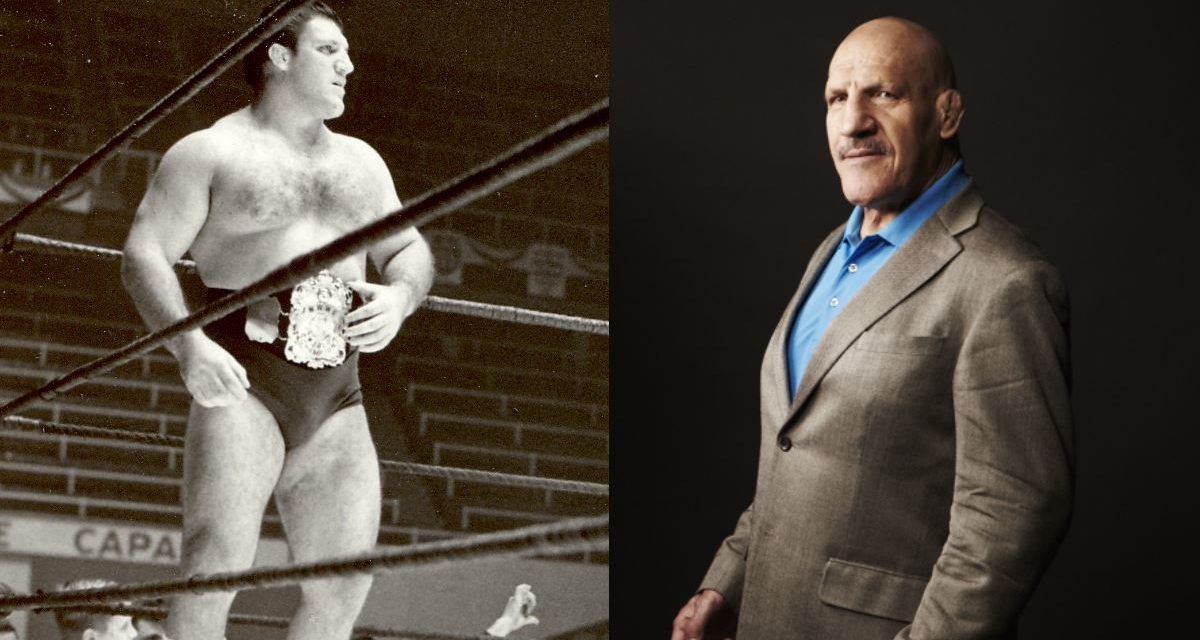With respect to World Wrestling Entertainment’s history, it is exceedingly rare that the early years of the company are discussed in detail, and even more so by someone who was a prominent figure during those decades. This is due to many of the wrestlers and promoters having passed away, and the WWE’s habit of only offering a cursory review of the 1960s and 1970s before skipping ahead to the 1980s and the Hulk Hogan boom years.

However, Kayfabe Commentaries latest release Timeline: The History of WWE – The Sixties – As Told By Bruno Sammartino offers a very vibrant window into the company’s early years and shows how the WWE’s rise to dominance of the wrestling world can be traced back to that era.
The interview begins by focusing on the final months of the WWE’s association with the National Wrestling Alliance, and what several of the significant figures involved in that decision were like as people. Sammartino does a remarkable job of giving the viewer a sense of how Vincent J. McMahon and his partner Toots Mondt operated the Capitol Wrestling Corporation, which would later on become the WWE, and how he heard about their decision to leave the NWA because they didn’t agree with the NWA title being put back on Lou Thesz. It is explained that this was due to Thesz not being considered the draw he once was in his earlier on in his career.
What was particularly fascinating to discover was how, according to Sammartino, it was McMahon that was enamored with Buddy Rogers, but that Mondt didn’t really care for him. Sammartino also elaborates on his own feelings about Rogers having been colored by various things he had heard about him prior to working with him, and that when he did wrestle him, he was a bit wary due to Rogers taking some liberties.
As well, Sammartino states during the interview that when Rogers would come into a territory he would bring an entourage of other wrestlers with him whom he would encourage a company to promote above and beyond wrestlers who were already there. At first this approach would increase the revenue coming in, but according to Sammartino a little while later the numbers at the gate would drop off. Once that happened Rogers, along with his crew, would move on to another territory and do the same thing there.
Sammartino also discusses in some detail how he became the WWWF World Champion and the change in perception outside the northeast territory. Prior to becoming champion Sammartino indicates that for the most part Buddy Rogers was only recognized as the World Champion within the northeast territory. However, after a few years when Sammartino would travel to Japan, and other places outside the northeast United States, he was recognized as the World Champion and the NWA experienced a bit of a decline. This was such a significant issue that in 1966 McMahon and the NWA entered into discussions about making Bruno Sammartino the WWWF/NWA Unified World Champion, but were unable to come to an agreement because both parties were unwilling to budge on the number of days a month that Sammartino would work for them.
Additionally, Sammartino describes expertly what Lou Albano, Gorilla Monsoon, Waldo Von Erich, Bobo Brazil, Ivan Koloff, and many other significant wrestlers of that era were like during the early years of their career. One wrestler that Sammartino mentions as one of the best he was ever in the ring with is Bobby Duncan, a star largely unknown to many nowadays.
Another wrestling legend that Sammartino gives his thoughts on is Gorgeous George, whom he only had the opportunity to wrestle towards the beginning of his career. As Sammartino detailed he wrestled him towards the end of George’s career, and that during the match he remembered fans calling his opponent an old man. During the interview, Sammartino makes it very clear how much this bothered him and how he decided to pay attention to the reaction from the fans so he would know when it was time to retire from the ring.
From there a discussion about Sammartino’s return to the ring in the 1980s versus Roddy Piper was discussed, but Sammartino makes it clear that it was done only to help his son, David Sammartino, and that he considers his 1981 match against Larry Zbyszko at Shea Stadium the true end of his in-ring career.
At two hours and 25 minutes, Kayfabe Commentaries’ Timeline: The History of WWE – The Sixties – As Told By Bruno Sammartino is a wonderful time warp back to that era in wrestling history and hopefully there will be a future episode in this series where Sammartino discusses the 1970s in the WWE.
RELATED LINK

